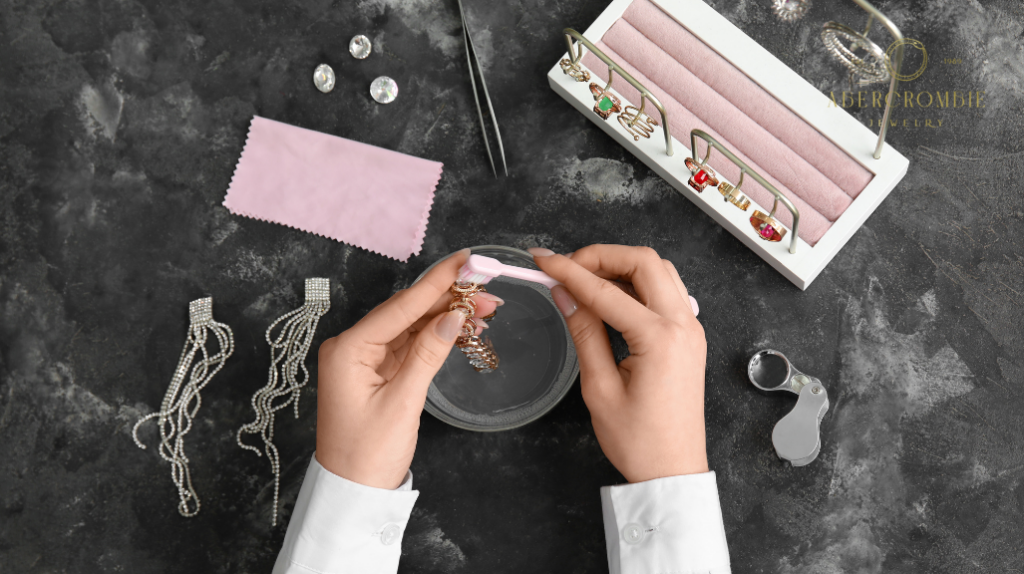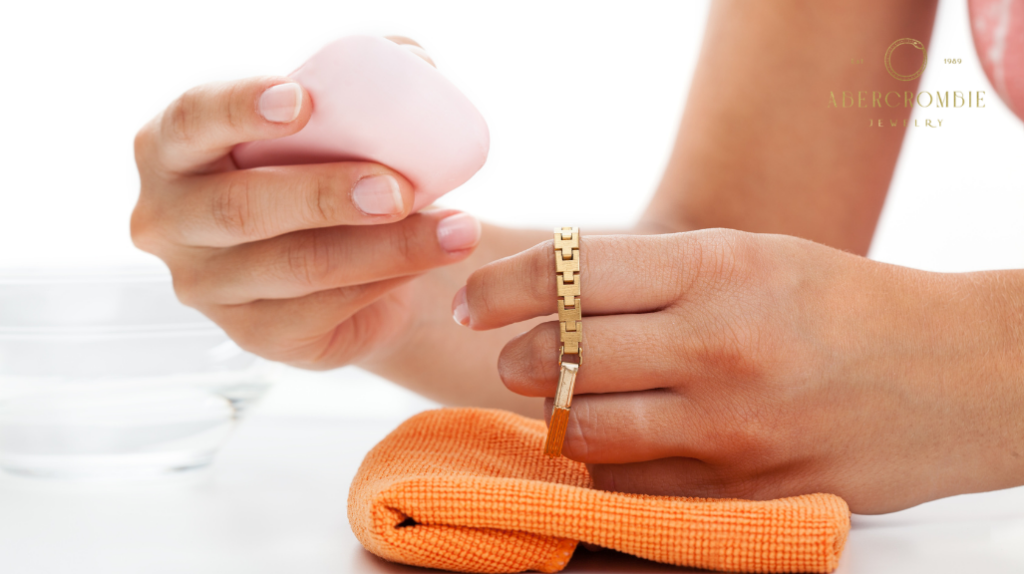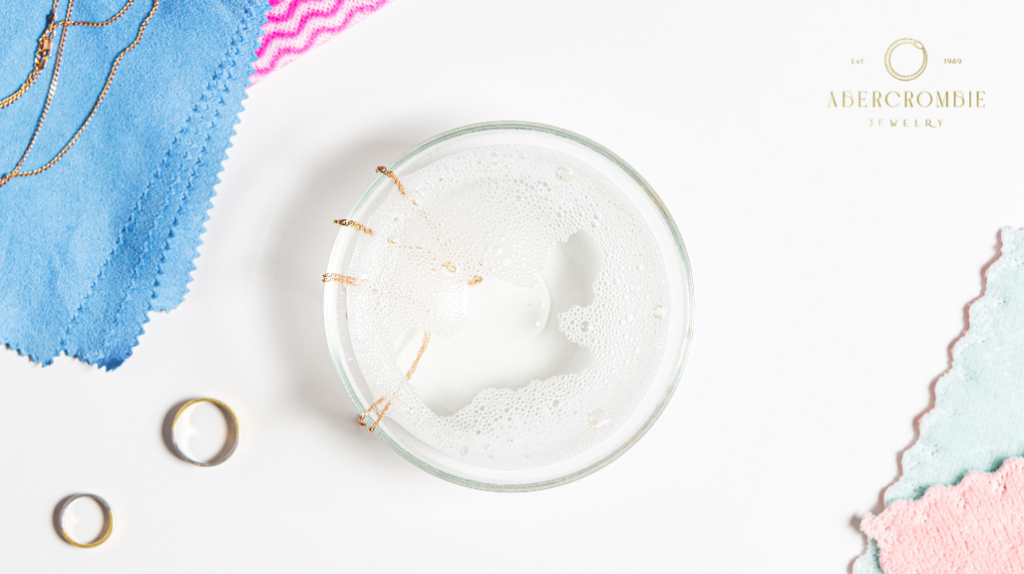Gold-plated jewelry, often overshadowed by its solid gold and silver counterparts, holds a unique charm with its affordability and radiant appearance. Its distinctive allure lies in the delicate balance of quality and accessibility, making it a favored choice among diverse jewelry enthusiasts. This special appeal distinguishes gold-plated jewelry within the vast universe of adornments, offering an experience that sets it apart as a category unto itself.
Key types of gold-plated pieces include necklaces, bracelets, earrings, and rings, each celebrated for their beautiful finish. Gold-plated watches also shine, providing an elegant yet practical option for those looking to enhance their style. Diving deeper, each form of gold-plated jewelry showcases its own beauty, care requirements, historical significance, and styling tips.
The following sections will explore these elements in depth, offering a comprehensive understanding of what makes gold-plated jewelry a treasured addition to any collection.
What is gold-plated jewelry?

Gold-plated jewelry is crafted by coating a base metal—like copper or silver—with a very thin layer of gold. This technique, known as electroplating, imbues the jewelry with the look and feel of gold at a more accessible price point. The gold layer’s thickness can vary but is often measured in microns.
While gold-plated jewelry is more affordable, it demands careful maintenance to preserve its shine and prevent the gold layer from diminishing. This type of jewelry is a budget-friendly option for those who appreciate the elegance of gold without the higher cost associated with solid gold items.
Why clean gold-plated jewelry regularly?
Cleaning gold-plated jewelry regularly is essential to preserve its luster and prolong its life. Over time, oils from the skin, dust, and chemicals can make the gold layer look dull and may even cause it to tarnish. Regular cleaning removes these harmful substances, preventing the accumulation that can degrade the gold plating.
This care is not just about keeping your jewelry looking its best; it’s also about ensuring the delicate gold layer stays intact, enabling you to enjoy your cherished pieces for many years.
Materials needed for cleaning

Gather the following essential items for an effective cleaning of your gold-plated jewelry. Each material is crucial in ensuring a thorough cleaning that safeguards the delicate gold layer against potential damage.
| Material | Purpose | Specifics/Recommendations |
| Mild dish soap | Dissolves oils and grime, safe for the gold layer. | Recommended: Dawn Ultra Dishwashing Liquid due to its gentle formula. |
| Warm water | Creates a non-abrasive cleaning solution when mixed with mild dish soap. | Use lukewarm tap water; too hot can damage the jewelry. |
| Soft cloth | Non-scratch material is perfect for drying and giving the jewelry a gentle polish. | Recommended: Microfiber cloth for its softness and non-abrasive qualities. |
| Soft-bristled toothbrush | Enables detailed cleaning in tight spaces and around gemstones without harming the plating. | Recommended: Baby toothbrush or a soft-bristled brush from brands like Oral-B, specifically designed for sensitive areas. |
| Gold polishing cloth | Specially designed to restore and enhance the shine of gold-plated jewelry while being delicate on the surface. | Recommended: Connoisseurs Gold Polishing Cloth, known for its effectiveness on gold-plated items. |
Mild dish soap
- A gentle cleaner that effectively removes oils and grime is safe for the gold layer. Look for soaps labeled as gentle or delicate, such as Dawn Ultra Dishwashing Liquid.
Warm water
- Creates a non-abrasive cleaning solution when mixed with mild dish soap. Ensure the water is lukewarm to prevent potential damage from excessive heat.
Soft cloth
- Non-scratch material is perfect for drying and giving the jewelry a gentle polish. Microfiber cloths, due to their softness and lint-free nature, are ideal for this purpose.
Soft-bristled toothbrush
- Enables detailed cleaning in tight spaces and around gemstones without harming the plating. A baby toothbrush or a soft-bristled brush designed for sensitive gums, such as those offered by Oral-B, can provide gentle yet effective cleaning.
Gold polishing cloth
- The Connoisseurs Gold Polishing Cloth is specially designed to restore and enhance the shine of gold-plated jewelry while being delicate on the surface. It is recommended for its quality and effectiveness in polishing gold-plated items without causing damage.
This detailed table provides specific recommendations and characteristics for each material needed in the cleaning process, offering readers actionable advice and enhancing the overall helpfulness of the guide.
Preparing your cleaning solution
Creating a safe and effective cleaning solution for your gold-plated jewelry involves a simple mixture of mild dish soap and warm water. The right balance ensures the solution is gentle enough not to damage the delicate gold layer. Follow these steps to prepare your cleaning solution:
- Fill a bowl with warm water: Start by filling a small bowl with lukewarm water. Ensure the water is not too hot to avoid potential damage to your jewelry.
- Add mild dish soap: Dispense a small amount of mild dish soap into the water. The ideal ratio is about one teaspoon of dish soap per cup of water.
- Stir gently: Mix the solution gently with a spoon or finger to combine the soap with the water. Aim for a light blend without creating too much foam, as excessive bubbles can make it harder to clean the jewelry effectively.
Here’s a detailed table outlining the steps and measurements for preparing your cleaning solution:
| Step | Action | Details | Measurement |
| 1 | Fill a bowl with water | Use lukewarm tap water, ensuring it’s not too hot. | 1 cup (approx. 240ml) |
| 2 | Add mild dish soap | Choose a gentle, non-abrasive dish soap. | 1 teaspoon (approx. 5ml) |
| 3 | Stir gently | Combine the soap and water without creating too much foam. | N/A |
This prepared solution is a gentle cleanser capable of dissolving oils and removing dirt without harming the gold plating. It marks the starting point for cleaning your gold-plated items, helping them retain their luster and appeal.
Cleaning process step-by-step

The cleaning process for gold-plated jewelry follows a meticulous sequence to ensure safe and effective cleaning without harming the delicate gold surface. Here are enhanced steps with detailed tips to ensure your gold-plated jewelry remains clean, shining, and well-preserved.
Wet cloth with warm, soapy water
- Initiate the cleaning by soaking a soft cloth in warm water and mild dish soap. Ensure the cloth is damp but not dripping to avoid excessive moisture, which could potentially seep into crevices and weaken adhesives.
Gently rub the jewelry.
- Softly rub the jewelry with a damp cloth, applying minimal pressure to avoid damage. Use gentle, linear strokes rather than a circular motion to prevent twisting or bending delicate parts.
Focus on visible dirt and tarnish.
- Concentrate on areas with visible dirt or tarnish, ensuring they receive adequate attention. For stubborn spots, lightly dampen the area with soapy water and allow it to sit for a minute before gently rubbing again.
Use a toothbrush for detailed areas.
- Employ a soft-bristled toothbrush for intricate designs, gently brushing to dislodge dirt. Tip: When cleaning around gemstones or clasps, use the brush in a light tapping motion to loosen dirt without applying pressure that could dislodge stones or weaken settings.
Clean crevices and engravings carefully
- Navigate crevices and engravings carefully, ensuring all hidden dirt is effectively removed. A toothpick wrapped in a soft cloth can gently dislodge any debris from these areas without scratching the jewelry.
Rinse the jewelry with clean water.
- Rinse the jewelry under clean water to wash off soap and loosen dirt. Use a slow stream of lukewarm water to avoid shocking delicate components or causing temperature-related damage.
Use a different soft cloth to rinse
- Use a fresh, soft cloth to assist in removing any remaining soap residue during the rinse. Lightly dab the areas where soap was applied to ensure no residue remains.
Dry jewelry with a soft cloth
- Thoroughly dry the jewelry using a gentle, lint-free cloth, ensuring all moisture is absorbed. Tip: Lay the jewelry on a soft towel, lay it flat, and pat it dry to avoid bending delicate pieces. Avoid using heat or blow dryers as the high temperatures can damage the gold plating.
Pat dry to avoid scratching.
- Pat the jewelry dry, being extra cautious to avoid any movements that might scratch the surface. For intricate pieces, consider using a hairdryer on the coolest setting to gently blow air into tight spaces, ensuring complete dryness without physical contact.
Polishing gold-plated jewelry

After the cleaning process, polishing gold-plated jewelry is essential to bring back its original shine and brilliance. Utilize a gold polishing cloth crafted specifically for this purpose, and gently rub the jewelry in a circular motion. This careful action helps to remove any lingering tarnish and boosts the shine without compromising the gold’s delicate surface.
Frequency of Polishing
- How often to polish: To maintain the shine without causing wear, polish your gold-plated jewelry once every 1-2 months. Frequent polishing can wear down the gold layer, so it’s best to polish only when necessary to rejuvenate the jewelry’s luster.
Signs It’s Time to Polish
- Visible tarnishing or dullness: When your gold-plated jewelry looks dull or shows signs of tarnishing, it indicates it’s time for a polish. This can include a lack of shine or the appearance of a slightly darker coloration on the gold surface.
- After exposure to harsh conditions: If your jewelry has been exposed to sweat, chlorine, or chemicals, even if there’s no visible tarnishing, give it a gentle polish to restore its protective layer and shine.
Use a gold polishing cloth.
- Choosing the right cloth: Always use a gold polishing cloth for gold-plated items. These cloths are gentle and often infused with a solution that enhances the shine without damaging the plating.
Rub gently in a circular motion.
- Technique: Carefully rub the jewelry in a circular pattern, applying only light pressure. Over-polishing or applying too much pressure can wear away the gold plating over time. If the jewelry has intricate designs or textures, follow the lines of the design to avoid catching and pulling.
Additional Tips
- Avoid over-polishing: While it might be tempting to polish your jewelry frequently to keep it shining, it can do more harm than good by wearing down the gold layer. Stick to the recommended frequency and signs. It’s time to polish to ensure your jewelry stays beautiful without unnecessary wear.
- Protective measures: After polishing, consider storing your jewelry in airtight bags with anti-tarnish strips to prolong the shine and reduce the need for frequent polishing.
Maintenance tips for shine

Keeping your gold-plated jewelry shining bright requires consistent maintenance beyond the basic steps of cleaning and polishing. Avoid exposing your jewelry to harsh chemicals, such as perfumes, lotions, and cleaners, as these substances can tarnish or even remove the gold layer. For storage, place your pieces in a dry, fabric-lined box to protect them from scratches and reduce their exposure to air and moisture, which can lead to tarnishing.
Moreover, it’s advisable to remove your gold-plated jewelry before participating in physical activities to prevent scratches and minimize contact with sweat, which can corrode the gold-plating over time. Adhering to these maintenance tips can greatly prolong the life and luster of your gold-plated jewelry, ensuring its beauty endures for years to come.
Avoid chemicals
- Protect your jewelry from harsh chemicals, including perfumes, lotions, and cleaners, to prevent damage to the gold plating.
Store jewelry properly
- Keep your pieces in a dry, fabric-lined box to safeguard against scratches and reduce tarnishing.
Remove before physical activities.
- Take off your jewelry before engaging in any physical activities to prevent scratches and lessen the risk of damage from sweat.
Prevent scratches and exposure to sweat.
- Regularly practicing careful handling and proper storage of your jewelry helps minimize scratches and corrosion from sweat.
Specific Situations for Removing Gold-Plated Jewelry
To further protect your gold-plated jewelry, consider removing it during the following activities or situations:
| Activity/Situation | Reason to Remove Jewelry |
| Swimming | Chlorine and salt water can corrode the gold plating. |
| Showering/Bathing | Soap and shampoo residues can dull the gold finish. |
| Applying Makeup | Chemicals in makeup and hairspray can tarnish the gold. |
| Exercising | Sweat can corrode the gold plating over time. |
| Sleeping | Prevents accidental bending or scratching. |
Tips for Traveling with Gold-Plated Jewelry
When traveling, keeping your gold-plated jewelry safe and secure is essential. Here are some tips for proper storage on the go:
| Tip | Description |
| Use a Jewelry Roll | A soft, fabric-lined jewelry roll provides individual compartments for each piece, preventing scratches. |
| Ziplock Bags | For extra protection, place each piece in a small ziplock bag to minimize exposure to air and moisture. |
| Carry On | Always keep your jewelry in your carry-on luggage to avoid loss or damage during transit. |
| Avoid Leaving in Hot Cars | Extreme temperatures can damage the jewelry, so avoid leaving it in a hot car. |
Common cleaning mistakes

Certain cleaning practices can inadvertently damage gold-plated jewelry, making it difficult to keep it in pristine condition. Harsh chemicals like bleach or ammonia-based cleaners can aggressively strip away the gold layer, compromising the jewelry’s aesthetic and structural integrity. Similarly, soaking the jewelry for too long can weaken adhesives that hold stones in place, risking damage to these embellishments.
Moreover, scrubbing too hard in an attempt to clean can result in the gold plating being worn away, exposing the base metal beneath. Being mindful of these common cleaning mistakes and steering clear of them is crucial for preserving the beauty and longevity of your gold-plated jewelry, allowing it to remain a treasured asset in your collection for years to come.
Using harsh chemicals
- Steer clear of bleach or ammonia-based cleaners, as they can harshly strip away the gold layer.
Soaking the jewelry
- Avoid prolonged soaking, which may weaken adhesives and endanger the integrity of stones and settings.
Scrubbing too hard
- Gentle cleaning is key; over-scrubbing can lead to removing the gold plating, revealing the base metal underneath.

